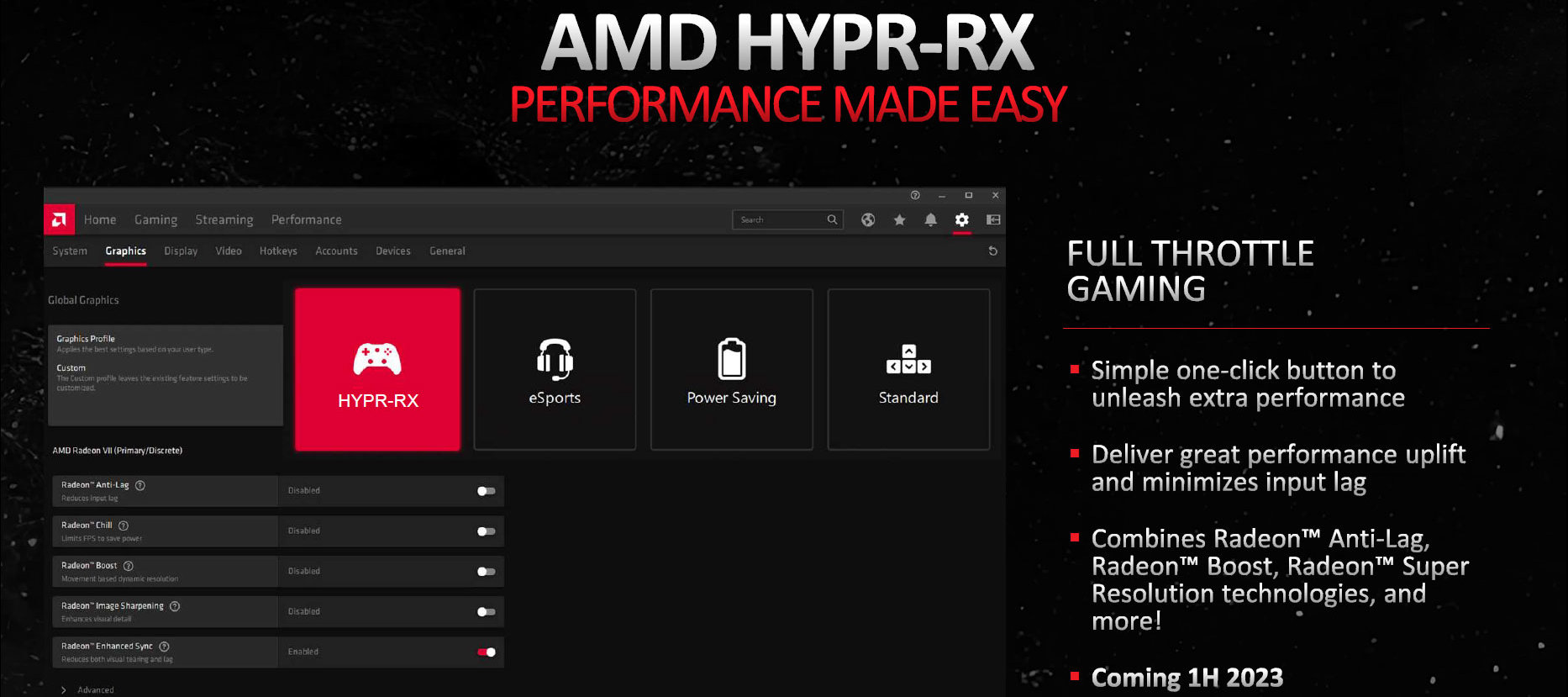HYPR-RX Detailed
HYPR-RX will combine AMD RSR (Radeon Super Resolution), Radeon Boost, and Radeon Anti-lag. RSR basically upscales the game to a higher resolution after all the post-processing effects have been applied. This is slightly different than FSR in the sense that FSR kicks in much earlier. One can enable RSR without changing the in-game settings, being a driver-level implementation highlighting that RSR may be easy to implement. Radeon Boost is also an interesting tech that renders the game at a lower resolution depending on the mouse’s movement. There have been cases of shimmering, although AMD will make improvements. Similarly, Radeon Anti-Lag slows down your CPU in case the GPU is not able to keep up. This shrinks input lag thus improving the responsiveness.
How to Enable
AMD HYPR-RX when it launches can be enabled via the AMD Adrenalin software. It will basically be a one-click button to enhance FPS and reduce input latency in supported titles. It is not sure how easy of an implementation it will be, although AMD will make sure to support the most recent titles when HYPR-RX launches.
Performance & Release Date
In Dying Light 2, HYPR-RX reduces input lag by almost 3x. At native 1080p resolution, the average FPS stand at 90 fps which are bumped to 166 fps upon enabling HYPR-RX. The fact that AMD used average frames speaks for itself. As for the specifications, AMD opted for the Ryzen 9 7900X CPU paired with DDR5-5200 memory. The output image was at the 1440p resolution possibly due to RSR being a part of HYPR-RX. AMD HYPR-RX is slated to launch in the first half of 2023 with no actual specified release date.


